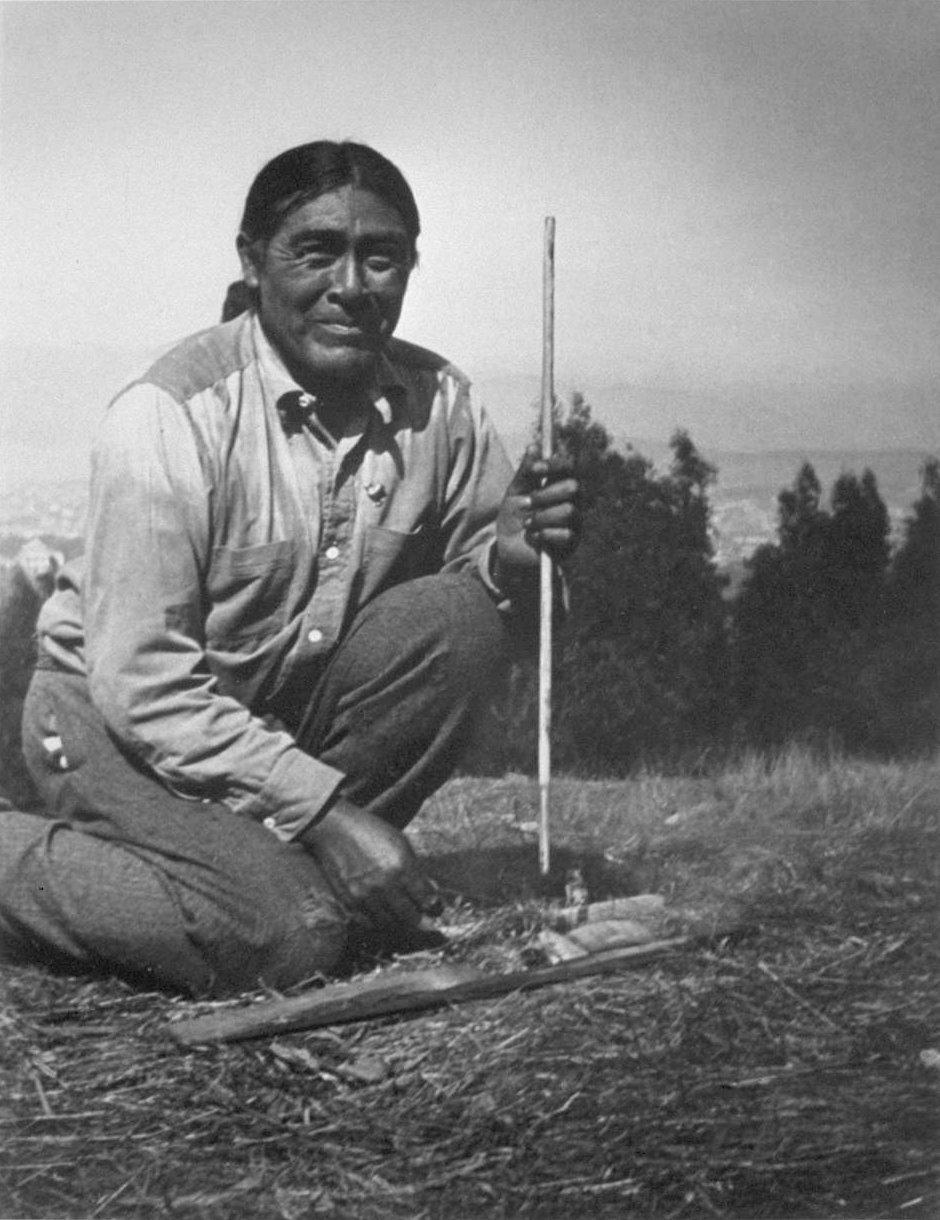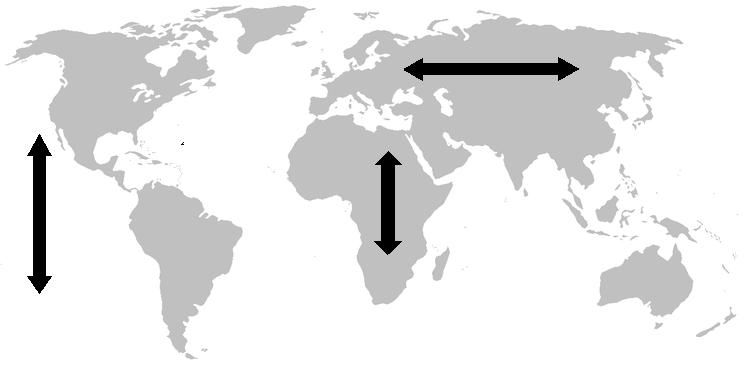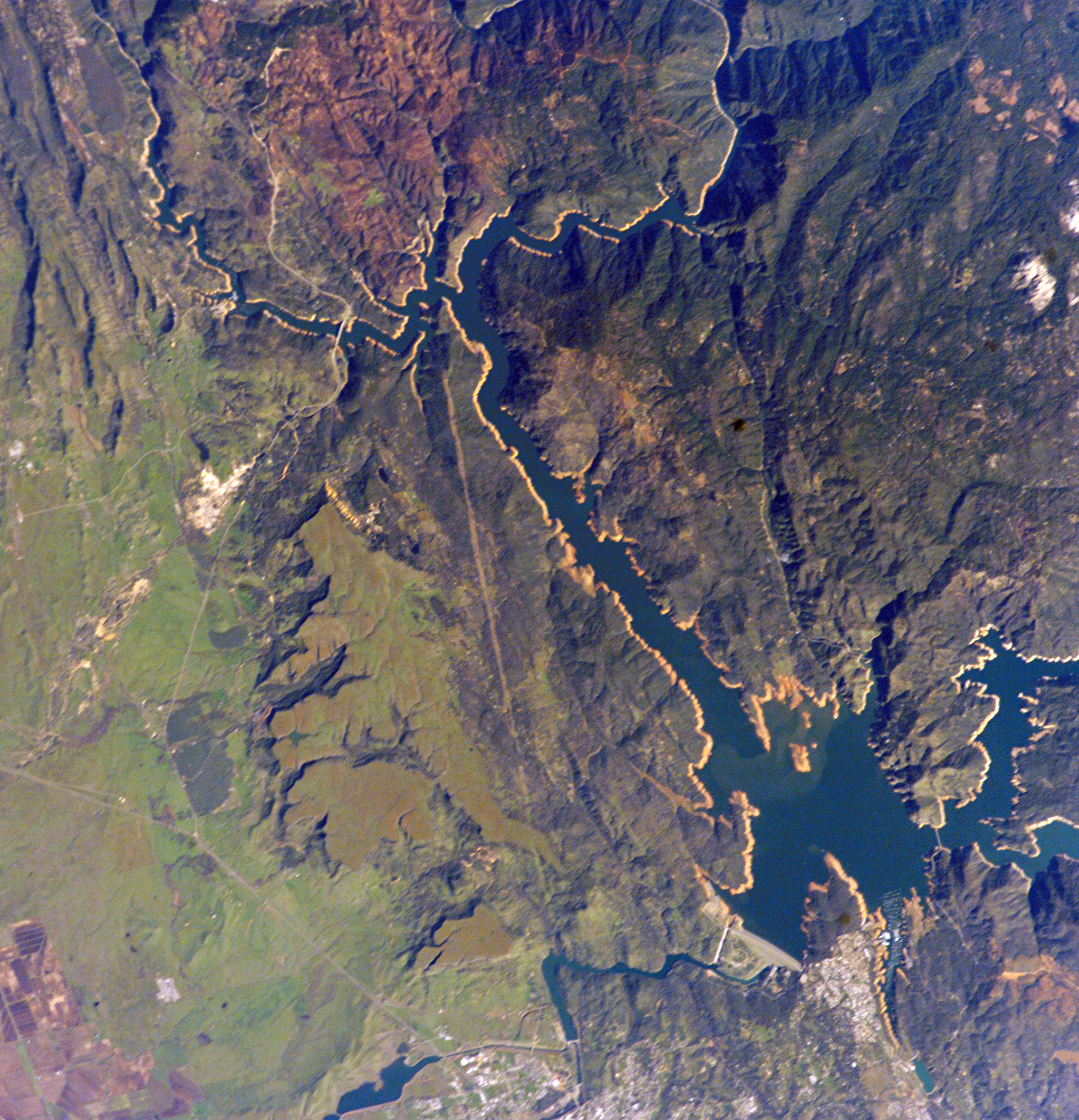|
Yana People
The Yana were a group of Native Americans indigenous to Northern California in the central Sierra Nevada, on the western side of the range. Their lands, prior to encroachment by white settlers, bordered the Pit and Feather rivers. They were nearly destroyed during the California genocide in the latter half of the 19th century. The Central and Southern Yana continue to live in California as members of Redding Rancheria. Etymology The Yana-speaking people comprised four groups: the North Yana, the Central Yana, the Southern Yana, and the Yahi. The noun stem ''Ya''- means "person"; the noun suffix is -''na'' in the northern Yana dialects and -''hi'' iin the southern dialects. History Anthropologist Alfred L. Kroeber put the 1770 population of the Yana at 1,500, and Sherburne F. Cook estimated their numbers at 1,900 and 1,850. Other estimates of the total Yana population before the Gold Rush exceed 3,000. They lived on wild game, salmon, fruit, acorns and roots. Their ter ... [...More Info...] [...Related Items...] OR: [Wikipedia] [Google] [Baidu] |
Yana Language
The Yana language (also Yanan) was formerly spoken by the Yana people, who lived in north-central California between the Feather River, Feather and Pit River, Pit rivers in what is now the Shasta County, California, Shasta and Tehama County, Tehama counties. The last speaker of the southernmost dialect, which is called Yahi, was Ishi, who died in 1916. When the last fluent speaker(s) of the other dialects died is not recorded. Yana is fairly well documented, mostly by Edward Sapir. The names ''Yana'' and ''Yahi'' are derived from ''ya'' "people" plus an obligatory suffix, ''-na'' in the northern two dialects and ''-hi'' or ''-xi'' in the southern two dialects. Regional variation There are four known dialects: * Northern Yana * Central Yana * Southern Yana * Yahi Northern Yana, Central Yana, and Yahi were well recorded by Edward Sapir through work with Betty Brown, Sam Batwi, and Ishi respectively. Only a small collection of words and phrases of Southern Yana (more properly, No ... [...More Info...] [...Related Items...] OR: [Wikipedia] [Google] [Baidu] |
Guns, Germs, And Steel
''Guns, Germs, and Steel: The Fates of Human Societies'' (subtitled ''A Short History of Everybody for the Last 13,000 Years'' in Britain) is a 1997 transdisciplinary non-fiction book by Jared Diamond. In 1998, it won the Pulitzer Prize for general nonfiction and the Aventis Prize for Best Science Book. A documentary based on the book, and produced by the National Geographic Society, was broadcast on PBS in July 2005. The book attempts to explain why Eurasian and North African civilizations have survived and conquered others, while arguing against the idea that Eurasian hegemony is due to any form of Eurasian intellectual, moral, or inherent genetic superiority. Diamond argues that the gaps in power and technology between human societies originate primarily in environmental differences, which are amplified by various positive feedback loops. When cultural or genetic differences have favored Eurasians (for example, written language or the development among Eurasians of resis ... [...More Info...] [...Related Items...] OR: [Wikipedia] [Google] [Baidu] |
Linguist
Linguistics is the scientific study of human language. It is called a scientific study because it entails a comprehensive, systematic, objective, and precise analysis of all aspects of language, particularly its nature and structure. Linguistics is concerned with both the cognitive and social aspects of language. It is considered a scientific field as well as an academic discipline; it has been classified as a social science, natural science, cognitive science,Thagard, PaulCognitive Science, The Stanford Encyclopedia of Philosophy (Fall 2008 Edition), Edward N. Zalta (ed.). or part of the humanities. Traditional areas of linguistic analysis correspond to phenomena found in human linguistic systems, such as syntax (rules governing the structure of sentences); semantics (meaning); morphology (structure of words); phonetics (speech sounds and equivalent gestures in sign languages); phonology (the abstract sound system of a particular language); and pragmatics (how social c ... [...More Info...] [...Related Items...] OR: [Wikipedia] [Google] [Baidu] |
Tuberculosis
Tuberculosis (TB) is an infectious disease usually caused by '' Mycobacterium tuberculosis'' (MTB) bacteria. Tuberculosis generally affects the lungs, but it can also affect other parts of the body. Most infections show no symptoms, in which case it is known as latent tuberculosis. Around 10% of latent infections progress to active disease which, if left untreated, kill about half of those affected. Typical symptoms of active TB are chronic cough with blood-containing mucus, fever, night sweats, and weight loss. It was historically referred to as consumption due to the weight loss associated with the disease. Infection of other organs can cause a wide range of symptoms. Tuberculosis is spread from one person to the next through the air when people who have active TB in their lungs cough, spit, speak, or sneeze. People with Latent TB do not spread the disease. Active infection occurs more often in people with HIV/AIDS and in those who smoke. Diagnosis of active ... [...More Info...] [...Related Items...] OR: [Wikipedia] [Google] [Baidu] |
Alfred Kroeber
Alfred Louis Kroeber (June 11, 1876 – October 5, 1960) was an American cultural anthropologist. He received his PhD under Franz Boas at Columbia University in 1901, the first doctorate in anthropology awarded by Columbia. He was also the first professor appointed to the Department of Anthropology at the University of California, Berkeley. He played an integral role in the early days of its Museum of Anthropology, where he served as director from 1909 through 1947. Kroeber provided detailed information about Ishi, the last surviving member of the Yahi people, whom he studied over a period of years. He was the father of the acclaimed novelist, poet, and writer of short stories Ursula K. Le Guin. Life Kroeber was born in Hoboken, New Jersey, to parents of German Protestant origin. His mother Johanna Muller was an American of German descent; his father Florence Kroeber came to the United States from Germany at the age of ten, with his parents and family, and became an importer of ... [...More Info...] [...Related Items...] OR: [Wikipedia] [Google] [Baidu] |
University Of California, Berkeley
The University of California, Berkeley (UC Berkeley, Berkeley, Cal, or California) is a public land-grant research university in Berkeley, California. Established in 1868 as the University of California, it is the state's first land-grant university and the founding campus of the University of California system. Its fourteen colleges and schools offer over 350 degree programs and enroll some 31,800 undergraduate and 13,200 graduate students. Berkeley ranks among the world's top universities. A founding member of the Association of American Universities, Berkeley hosts many leading research institutes dedicated to science, engineering, and mathematics. The university founded and maintains close relationships with three national laboratories at Berkeley, Livermore and Los Alamos, and has played a prominent role in many scientific advances, from the Manhattan Project and the discovery of 16 chemical elements to breakthroughs in computer science and genomics. Berkeley is ... [...More Info...] [...Related Items...] OR: [Wikipedia] [Google] [Baidu] |
Oroville, California
Oroville (''Oro'', Spanish for "Gold" and ''Ville'', French for "town") is the county seat of Butte County, California, United States. The population of the city was 15,506 at the 2010 census, up from 13,004 in the 2000 census. Following the 2018 Camp Fire that destroyed much of the town of Paradise, the population of Oroville increased as many people who lost their homes relocated to nearby Oroville. In 2019, the California Department of Finance estimated the population of Oroville is 20,737. Oroville is considered the gateway to Lake Oroville and Feather River recreational areas. The Berry Creek Rancheria of Maidu Indians of California is headquartered in Oroville. Oroville is located adjacent to State Route 70, and is in close proximity to State Route 99, which connects Butte County with Interstate 5. The city of Chico is located about 23 miles (38 kilometers) northwest of the city, and the state capital of Sacramento lies around 70 miles (112 kilometers) to the south ... [...More Info...] [...Related Items...] OR: [Wikipedia] [Google] [Baidu] |
Ishi
Ishi ( – March 25, 1916) was the last known member of the Native Americans in the United States, Native American Yana people#Yahi, Yahi people from the present-day state of California in the United States. The rest of the Yahi (as well as many members of their parent tribe, the Yana people, Yana) were killed in the California genocide in the 19th century. Ishi, who was widely acclaimed as the "last wild Indian" in the United States, lived most of his life isolated from modern North American culture. In 1911, aged 50, he emerged at a barn and corral, from downtown Oroville, California. ''Ishi'', which means "man" in the Yana language, is an adopted name. The anthropologist Alfred Kroeber gave him this name because in the Yahi culture, tradition demanded that he not speak his own name until formally introduced by another Yahi. When asked his name, he said: "I have none, because there were no people to name me," meaning that there was no other Yahi to speak his name on his b ... [...More Info...] [...Related Items...] OR: [Wikipedia] [Google] [Baidu] |
Ishi 1914
Ishi ( – March 25, 1916) was the last known member of the Native American Yahi people from the present-day state of California in the United States. The rest of the Yahi (as well as many members of their parent tribe, the Yana) were killed in the California genocide in the 19th century. Ishi, who was widely acclaimed as the "last wild Indian" in the United States, lived most of his life isolated from modern North American culture. In 1911, aged 50, he emerged at a barn and corral, from downtown Oroville, California. ''Ishi'', which means "man" in the Yana language, is an adopted name. The anthropologist Alfred Kroeber gave him this name because in the Yahi culture, tradition demanded that he not speak his own name until formally introduced by another Yahi. When asked his name, he said: "I have none, because there were no people to name me," meaning that there was no other Yahi to speak his name on his behalf. Ishi was taken in by anthropologists at the University of Ca ... [...More Info...] [...Related Items...] OR: [Wikipedia] [Google] [Baidu] |
Cowboy
A cowboy is an animal herder who tends cattle on ranches in North America, traditionally on horseback, and often performs a multitude of other ranch-related tasks. The historic American cowboy of the late 19th century arose from the '' vaquero'' traditions of northern Mexico and became a figure of special significance and legend.Malone, J., p. 1. A subtype, called a wrangler, specifically tends the horses used to work cattle. In addition to ranch work, some cowboys work for or participate in rodeos. Cowgirls, first defined as such in the late 19th century, had a less-well documented historical role, but in the modern world work at identical tasks and have obtained considerable respect for their achievements. Cattle handlers in many other parts of the world, particularly South America and Australia, perform work similar to the cowboy. The cowboy has deep historic roots tracing back to Spain and the earliest European settlers of the Americas. Over the centuries, differ ... [...More Info...] [...Related Items...] OR: [Wikipedia] [Google] [Baidu] |
Mill Creek (Tehama County)
Mill Creek is a large stream in northern California. It is an eastside tributary of the Sacramento River, draining an area of and flowing for .U.S. Geological Survey. National Hydrography Dataset high-resolution flowline dataThe National Map, accessed March 10, 2011 The creek begins in Shasta County, California, but almost immediately flows into Tehama County, California. The creek's source is a thermal spring at an elevation of in Lassen Volcanic National Park. At first, the creek flows roughly south while meandering to the east and west, but the lower two-thirds of the creek flow roughly southwest until it reaches the Sacramento River at an elevation of only , just north of Los Molinos, California. In the creek's upper reaches, it flows through meadows and dense forests. Later, it descends through a steep canyon and flows into the Sacramento Valley. It flows about in the valley before it reaches its confluence with the Sacramento River. The creek is in excellent condition, du ... [...More Info...] [...Related Items...] OR: [Wikipedia] [Google] [Baidu] |
Genocide
Genocide is the intentional destruction of a people—usually defined as an ethnic, national, racial, or religious group—in whole or in part. Raphael Lemkin coined the term in 1944, combining the Greek word (, "race, people") with the Latin suffix ("act of killing").. In 1948, the United Nations Genocide Convention defined genocide as any of five "acts committed with intent to destroy, in whole or in part, a national, ethnical, racial or religious group." These five acts were: killing members of the group, causing them serious bodily or mental harm, imposing living conditions intended to destroy the group, preventing births, and forcibly transferring children out of the group. Victims are targeted because of their real or perceived membership of a group, not randomly. The Political Instability Task Force estimated that 43 genocides occurred between 1956 and 2016, resulting in about 50 million deaths. The UNHCR estimated that a further 50 million had been dis ... [...More Info...] [...Related Items...] OR: [Wikipedia] [Google] [Baidu] |






_circa_1911-08-29.jpg)

